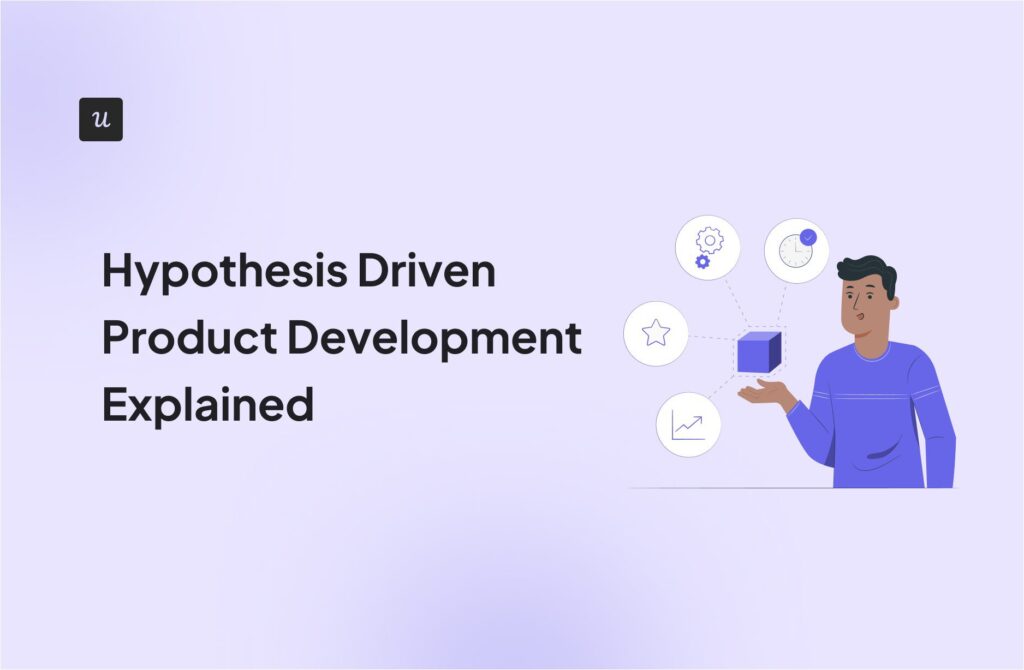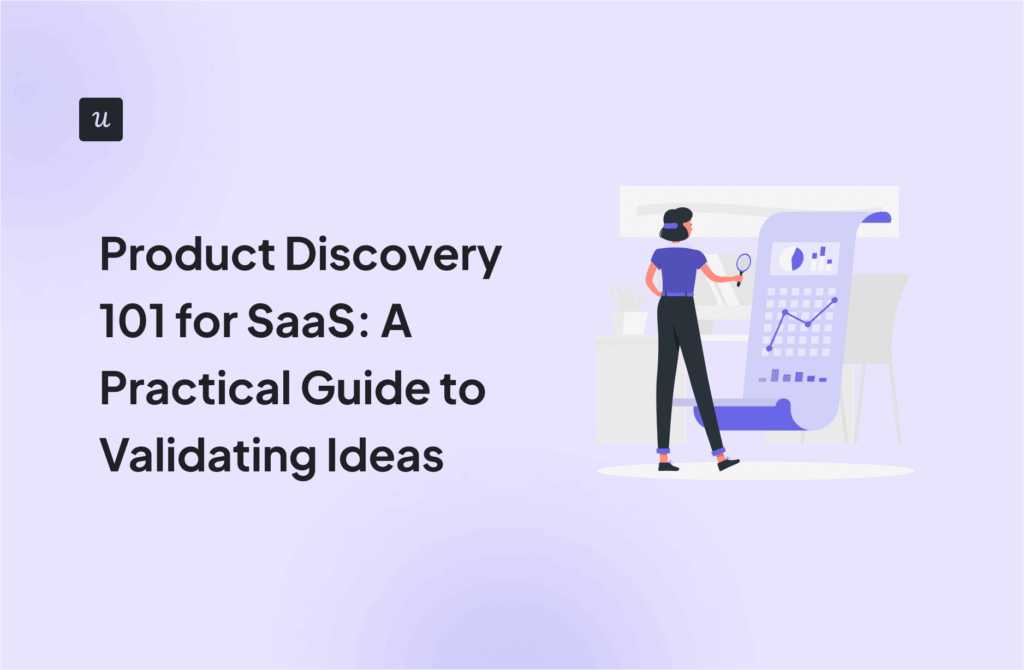
Product Metrics Benchmark Report 2024: 6 Key Insights for Product Teams
Looking for reliable metrics benchmarks to gauge your product performance and inform your decisions?
That’s what you can find in Userpilot’s Product Metrics Benchmark Report.
In this article, you’ll learn how this report was created and how it differs from similar ones. We also share 6 key insights for product managers that we found particularly interesting.
Try Userpilot Now
See Why 1,000+ Teams Choose Userpilot

Overview of Product Metrics Benchmark Report
- The Product Metrics Benchmark Report analyzes data from 547 SaaS companies across different verticals and growth models to provide insights on 6 key product metrics.
- This report enables SaaS teams to make data-driven decisions, compare their performance against industry benchmarks, and learn best practices to improve their KPIs.
- What makes Userpilot’s report stand out is that it segments the data by company size, industry vertical, and acquisition model (PLG vs. SLG) to provide accurate and actionable benchmarks, and expert insights and tips.
- More companies follow the PLG strategy compared to the SLG strategy. Surprisingly, SLG companies had higher user activation, checklist completion rates, core feature activation rates, and shorter time to value.
- 80% of companies with 50%+ activation rates used videos, GIFs, or animations in their onboarding flow to help users quickly understand the product value and functionality.
- Fintech and insurance companies had the highest onboarding checklist completion rate of 24.5%, likely because users must fully understand the tools to minimize risks in these industries.
- HR companies boasted the highest core feature adoption rate at 31%. This may be because HR tools play an essential role in daily business operations.
- PLG companies had higher 1-month retention rates of 48.4% compared to 39.1% for SLG companies, possibly due to more customer-centric processes, like self-service support.
- As company revenue grew from $5-10M to $50M+, NPS scores improved from 23.3 to 39.1, but the smallest companies with $1-5M revenue had a higher NPS of 34.5 due to greater agility.
- Want to improve your key product metrics with Userpilot? Book the demo!
What is Userpilot’s Product Metrics Benchmark Report?
The Product Metrics Benchmark Report is based on first-party data from 547 SaaS companies from different verticals (Martech, CRM & Sales, Fintech & Insurance, Healthcare, HR, Edtech, AI & ML, and other business services) and growth models (PLG vs SLG).
It looks into 6 key metrics:
- User Activation Rate.
- Time to Value (TTV).
- Month 1 Retention Rate.
- Core Feature Adoption Rate.
- Onboarding Checklist Completion Rate.
- Net Promoter Score (NPS).
Why should product teams read this benchmark report?
The report is a riveting read, but that’s not its main purpose. It offers SaaS teams tangible benefits.
Make data-driven business decisions
The report offers real-life data that you can use to make better-informed decisions about your product and guide strategic planning. This will help you gain a competitive edge.
Compare performance against industry benchmarks
We segmented the companies that took part in the study by vertical.
This means you can compare your company’s performance against other similar businesses. And identify areas where you need to up your game.
Learn best practices to improve key metrics
Apart from raw data, the report includes practical tips from industry experts, like Marty Cagan and Dan Olsen. So, you also learn how to improve vital product metrics.
How does Userpilot’s Benchmark Report compare to others?
You may have already seen other SaaS benchmark reports, like the Pendo Product Benchmarks Report, Lenny’s Benchmarks, or the 2024 Mixpanel Benchmarks Report. They also use quality proprietary data and offer a wealth of data.
How is our report different?
We’ve segmented the studied companies by size, vertical, and acquisition models. This makes the insights more valid. When you compare your product and marketing performance, it’s against similar products, apples to apples.
What makes our report stand out is that we didn’t just lump all this diverse data together. Instead, we took the extra step to segment the report by company size, industry vertical, and acquisition model (PLG vs. SLG). So the benchmarks we provide are accurate and actionable, giving you relevant comparisons that make sense for your specific context. – Lusine Sargsyan, Demand Generation Manager at Userpilot
It gets better.
Our report isn’t just about numbers. It also offers interpretation of data, expert quotes, and actionable tips on how to move the needle.
6 key findings from the Product Metrics Benchmark Report 2024
Let’s unpack 6 findings from the report that we found particularly interesting.
1. More companies follow the PLG strategy compared to the SLG strategy
Product-led growth (PLG) is a strategy that uses the product as the primary driver for user acquisition, activation, and retention. Instead of telling potential customers how great your product is, you let them use it for free and experience its value firsthand.
This is different from the sales-led growth (SLG) approach where the sales team drives customer acquisition.
Our study has found that 79% of SaaS companies adopt product-led growth strategies to drive product growth, and only 21% follow the sales-led growth approach.
This isn’t surprising, as SLG is believed to be a bit old-school now – not that trendy anymore.
But here’s the shocker:
SLG companies that we studied for the report had higher user activation (41.6% vs. 34.6%), a shorter time to value (1 day 11 hours vs 1 day 12 hours), higher checklist completion rates (22.1% vs 19%), and higher core feature activation rates (26.7% vs 24.3%).
Does it mean that SLG is better than PLG, then?
Not quite. In SLG, monetization happens earlier in the process, and once a customer pays up, they’re keener to get the value for their money. In PLG, there’s no such commitment, so users approach the relationship with a new product on more casual terms.

2. Companies with 50%+ activation rates used videos, GIFs, or animations in their onboarding flow
80% of companies achieving activation rates above 50% use multimedia elements such as videos, GIFs, or animations in their onboarding processes.
Again, no surprises here.
Visuals help users quickly understand the product’s value and functionality so they don’t only increase engagement but also activation. Such content also caters to different learning styles and makes onboarding more inclusive.

3. Fintech and insurance companies have the highest onboarding checklist completion rate
The average checklist completion rate is 19.2%, but fintech and insurance companies lead in onboarding checklist completion rates. With 24.5%, this is over 5% higher than in other niches.
The reason?
We attribute this high completion rate to the nature of these industries: with so much at stake, users must fully understand the platform to minimize risks.
How can you increase the completion rates for your checklists?
Keep them short and sweet (up to 7 steps), use progress bars for extra motivation, and include tasks they’ve already completed to increase the perception of achievement.
However, according to Yoel Eilat, the Director of Product Growth at D-ID, the key factor is the choice of tasks to include in the checklist. He recommends analyzing the user in-app behavior and usage frequency to find the right ones:
An approach I recommend is to examine the overlap between core user activities and the frequency of their return to the product (e.g., logging in for another session, using the feature again). Actions with a large intersection (i.e., correlation) are prime candidates for increasing user activation through checklists. – Yoel Eilat, Director of Product Growth at D-ID

4. HR companies have the highest feature adoption rate
The core feature adoption rate is the percentage of users who habitually use the product’s key features. The higher the adoption rate, the more value users get out of the product and this translates into improved customer satisfaction and loyalty.
Human Resources (HR) companies boast the highest core feature adoption rate at 31%.
This illustrates the essential role that HR tools play in daily business operations, from payroll and benefits management to compliance.
How can you replicate their success?
Focus on clearly communicating the benefits of the core functionality and providing comprehensive training and support.
The strategy that works for CORD, a chat and collaboration tool, is recruiting product advocates within teams who promote the feature by leaving comments with @tags:
But by far the most effective for us, as a “social” product, is when other users leave comments @mentioning their teammates. This means we need to “trigger”one advocate in every team that will spread the feature organically by using it. – Nimrod Priell, CEO at CORD

5. PLG companies have higher 1-month retention rates than SLG companies
The retention rate is the percentage of users who keep using the product after a period. For the report, we looked at 1-month retention, which indicates how valuable users find the product early on. It’s linked with long-term retention and customer lifetime value.
Interestingly, the 1-month retention rate was the only metric where product-led companies outperformed sales-led ones by a wide margin: 48.4% vs 39.1%.
One of the possible explanations is that PLG companies are better at looking after their users when they sign up, for example, through personalized user onboarding or self-service support.
PLG companies are also believed to be better at using customer feedback and usage data to inform product development. As a result, their features are more likely to be aligned with genuine user needs.
That’s one of the points that Dan Olsen, a Product Management Trainer, Author, and Speaker mentions in his recipe for improving retention:
Use Importance vs. Satisfaction framework. Your retention rate will be higher if you solve a problem that is of high importance to your target customer and if the way you solve that problem results in high satisfaction. – Dan Olsen, Product Management Trainer, Author, and Speaker

6. As companies’ revenue grows, their NPS typically improves
NPS, or Net Promoter Score, is an indication of customer satisfaction and loyalty. The score is based on a survey in which you ask users how likely they are to recommend the product to their friends and colleagues.
Our study has found that NPS is positively correlated with company revenue:
- $5-10M – 23.3 NPS score
- $10-50M – 37.5 NPS score
- $50M+ – 39.1 NPS score
This could be because larger companies have more resources to allocate to innovation and customer satisfaction initiatives. Their processes might also be better tuned through years of trial and error.
But here’s an interesting twist: the smallest companies (1-5M in revenue) had a higher average NPS of 34.5. This could be attributed to their higher flexibility and agility, which enable them to respond faster to customer feedback and adapt.
How can you improve the NPS score?
Use the NPS survey as an opportunity to improve the product. Follow up with an open-ended question, support your detractors with tailored experiences, and interview the most loyal customers to understand their satisfaction drivers.
For the feedback to be of use, users need to take part in the survey in the first place. To increase response rates, Ashley Cheng, Growth and Product Marketer at Usersnap recommends using analytics to find the best moment to trigger the surveys:
To increase the engagement rate, start by identifying meaningful experiences and timing to send the survey, for example the 5th login of new users or after 10 minutes in your web app. – Ashley Cheng, Growth and Product Marketer at Usersnap

Conclusion
Userpilot’s Product Metrics Benchmark Report 2024 allows you to compare your product performance to other tools in the same vertical. And use the insights to make better-informed decisions.
If you’d like to learn how to improve your key product metrics with Userpilot, book the demo!



![10 Free Product Roadmap Templates You Need in 2026 [+Free Download] cover](https://blog-static.userpilot.com/blog/wp-content/uploads/2026/01/10-product-roadmap-templates-you-need-in-2026-free-download_d8269f0b0b9749f6ad7b519ab7ac1833_2000-1024x670.png)




